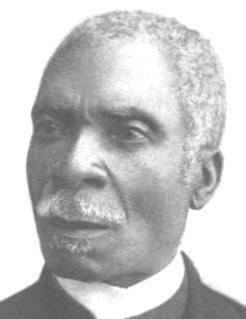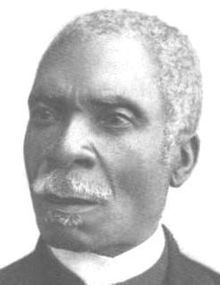Succeeded by Borno Monpoint | Name Tiresias Sam Preceded by Alson Verne | |
 | ||
Paul Tirésias Augustin Simon Sam (1835–1916) was the President of Haiti from 31 March 1896 to 12 May 1902. He resigned the presidency just before completing his six-year term. A likeness of Simon Sam has been featured on several Haitian postage stamps.
Biography
Born in the year 1835, Tirésias Simon Sam was a well-received politician and he rose to become the country's president in the year 1896. Simon Sam resigned before completion of his presidential term. His political popularity has seen several postage stamps in Haiti bear his likeness. There were reports that Victoire Jean-Baptiste, the president’s mistress, had much influence on his leadership. This article looks into detail the governance of Tirésias Simon Sam.

According to the constitution of Haiti, Tirésias Simon Sam was elected as the new Haitian President, a week after his predecessor Hyppolite died. Simon Sam was instituted by the National Assembly which held a meeting in Port-au-Prince on the 31st of March 1896. Before the new position Simon Sam was the Secretary of War for Haiti. His new term was to run for a period of seven years according to the Haitian constitution.
All the relevant people in governance had accepted the election of the new president. Simon Sam was sworn in on the 1st of April 1896.
Despite humiliation and pressure from foreign authorities, especially United States and Germany, Haiti remained calm during the reign of the popular President Simon-Sam.
His predecessors had majored on infrastructure development, something that Tirésias Simon Sam embraced. During his governance a new structure to hold the country’s Court of Justice was started in Port-au-Prince. New railways were constructed to connect major towns with the Haitian capital. In 1900, Simon Sam’s government signed a treaty with France for reciprocity. In 1902 the US also signed a treaty with Haiti on naturalization.
Concerning his term in office, the Haitian General Assembly had misinterpreted the constitution. The issue had been published in local newspapers and was raising concerns. Whereas the National Assembly had declared that Tirésias Simon Sam was to remain in office until the 15th of May, 1903 this was contrary to the Haitian constitution. According to the Constitution of Haiti, article 93 reads: “In case of the death, resignation, or dismissal of the President, his successor is appointed for seven years, and his power must always cease on the 15th of May, even if the seventh year of his term be not completed.” This article was applicable to the presidential term of Simon Sam. His election was on 31 March 1896 and so he was supposed to leave the presidential seat on the 15th day of May, 1902.
President Sam wrote a letter of resignation to the Haitian National Assembly on the 12th day of May, 1902, three days before the constitutional expiry of his presidential term. He left Port-au-Prince the following day. After resignation of Tirésias Simon Sam, Haiti was left in the hands of an interim government that was led by General Boisrond Canal, a former Head of state of the country. This provisional government was responsible for maintaining law and order before an election of a legal president.
The cousin of Simon Sam, Vilbrun Guillaume Sam, was also a President of Haiti for only five months in 1915. His mistress, Victoire Jean-Baptiste, is said to have had some influence over him.
